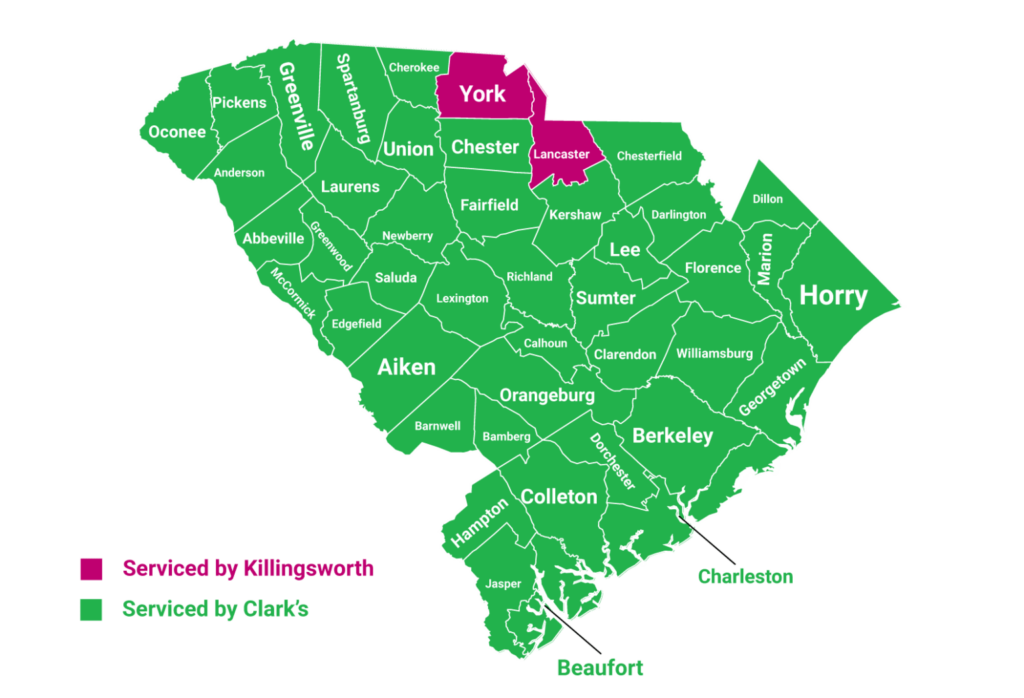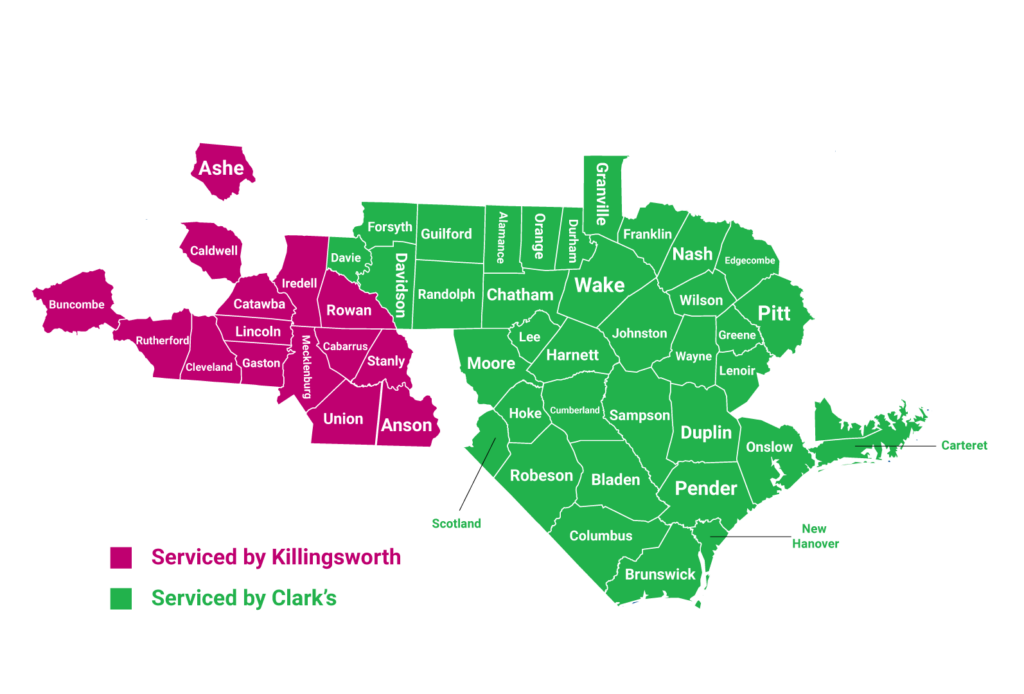Service Areas
At Clark’s Termite and Pest Control, we are dedicated to assisting both residential and commercial clients in safeguarding their properties, fostering pest-free living and working spaces. With a legacy spanning over four decades, Clark’s Termite and Pest Control takes pride in serving homes and businesses across the Carolinas and Savannah, GA. Employing proactive measures, cutting-edge technology, and eco-friendly solutions, we adapt to the evolving requirements for creating healthier environments for individuals. businesses and communities. Call (866)781-4991 today to begin service.


South Carolina
South Carolina
Serviced by Killingsworth

North Carolina
- Apex, NC
- Asheboro, NC
- Burlington, NC
- Carrboro, NC
- Cary, NC
- Chapel Hill, NC
- Clayton, NC
- Clemmons NC
- Durham, NC
- Fayetteville, NC
- Fuquay-Varina, NC
- Garner NC
- Goldsboro, NC
- Greensboro, NC
- Greenville, NC
- Holly Springs, NC
- Irmo, NC
- Jacksonville, NC
- Kernersville, NC
- Kinston, NC
- Knightdale, NC
- Morrisville, NC
- Raleigh, NC
- Thomasville, NC
- Wilson, NC
North Carolina
Serviced by Killingsworth
- Charlotte, NC
- Concord, NC
- Gastonia, NC
- Huntersville, NC
- Indian Trail, NC
- Matthews, NC
- Waxhaw NC
- Weddington NC
- Monroe NC
- Lincoln County NC
- Kings Mountain NC
- Mount Holly NC
- Dallas NC
- Belmont NC
- Gaston County NC
- Troutman NC
- Mooresville NC
- Statesville NC
- Iredell County NC
- Davidson NC
- Mint Hill NC
- Cornelius NC
- Pineville NC
- Maiden NC
- Hickory NC
- Catawba NC
- Lake Norman NC
- Harrisburg NC
- Midland NC

Securing Your Residence or Business with Clark’s Termite and Pest Control
Clark’s Termite and Pest crafts pest control services effective and efficient pest control services for homeowners, business owners, managers, and municipalities. We utilize Integrated Pest Management techniques to attack the root of your pest issue, find pressure points, and create treatment plans that prevent future infestations. Our pest control materials are carefully chosen and administered to minimize risks to human health, pets, and the environment. Reach out to Clark’s Termite and Pest Control today for a complimentary, no obligation estimate by calling 866-781-4991 or filling out our convenient online form!
